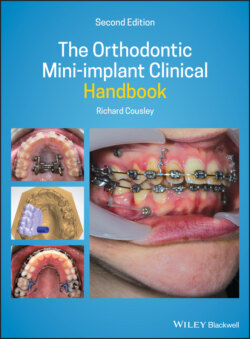Читать книгу The Orthodontic Mini-implant Clinical Handbook - Richard Cousley - Страница 26
1.13 Mini‐implant Fracture
ОглавлениеMini‐implant fracture is thankfully a rare occurrence nowadays since most mini‐implant materials and designs do not easily fracture within the normal torque limits in clinical practice [53,54]. However, some studies, aimed at fracturing mini‐implants in hard acrylic blocks, have failed to allow for the low insertion torques experienced with many designs and especially in the case of self‐drilling body versions. Therefore, fractures due to poor clinical technique may be attributed incorrectly to mini‐implant weakness.
Fracture may occur during insertion, but also on removal if the mini‐implant has been preweakened. Fracture of the mini‐implant tip may occur when a root is inadvertently contacted (i.e. the insertion position and/or angle is incorrect) or when the insertion angle is altered with the mini‐implant partially inserted through the cortical plate. This is most likely to occur due to incorrect technique and/or clinical inexperience. Fracture of the main section of a mini‐implant body is a particular risk, on either insertion or removal, with mini‐implants which feature a narrow diameter and cylindrical body design (Figure 1.4) [55,56] or when excessive insertion torque occurs (e.g. in the posterior mandible with dense, thick cortical bone). If a mini‐implant fractures on removal, flush with the bone surface, and the retained part is unlikely to impede any remaining tooth movements, then it may be left in situ because of the biocompatibility of titanium alloy (Figure 1.4c). In the rare event that removal of a fractured part is indicated then this involves creating access by raising a small mucoperiosteal flap, trephination of a narrow collar of bone around the mini‐implant end, and then derotation of the fractured fragment using a Weingarts or mosquitos‐like instrument.
Figure 1.4 Intraoral radiographs taken after (a) insertion of a cylindrically shaped mini‐implant mesial to the maxillary first molar, and (b) its fracture near the coronal end of the body. The initial fracture line is visible in the intact mini‐implant. (c) Sectional orthpantomograph (OPG) showing the (asymptomatic) retained mini‐implant body over five years later.
